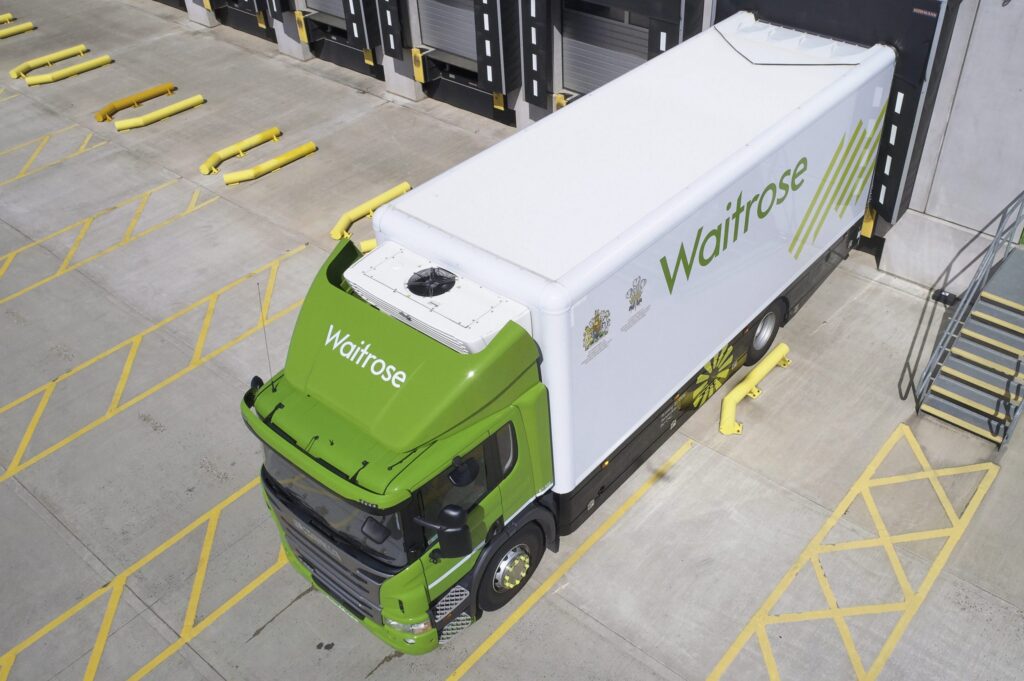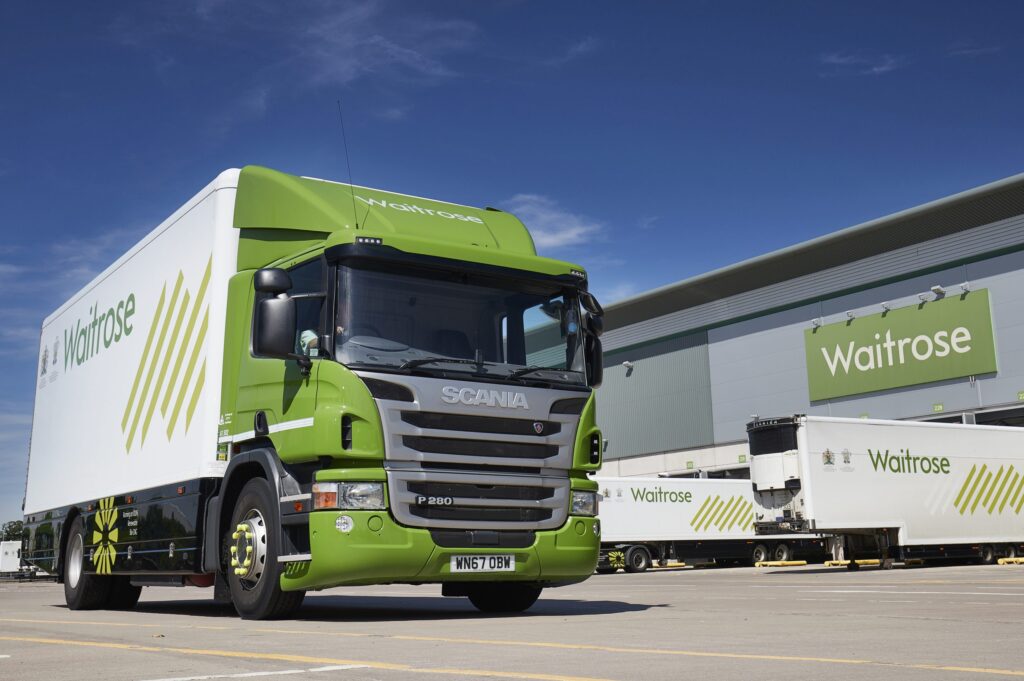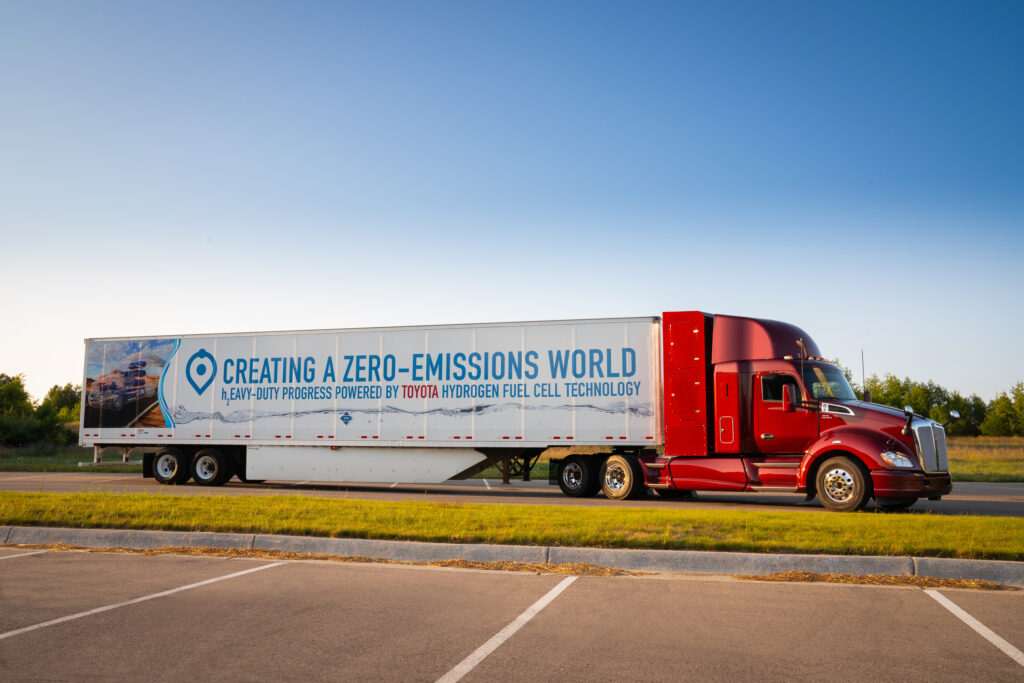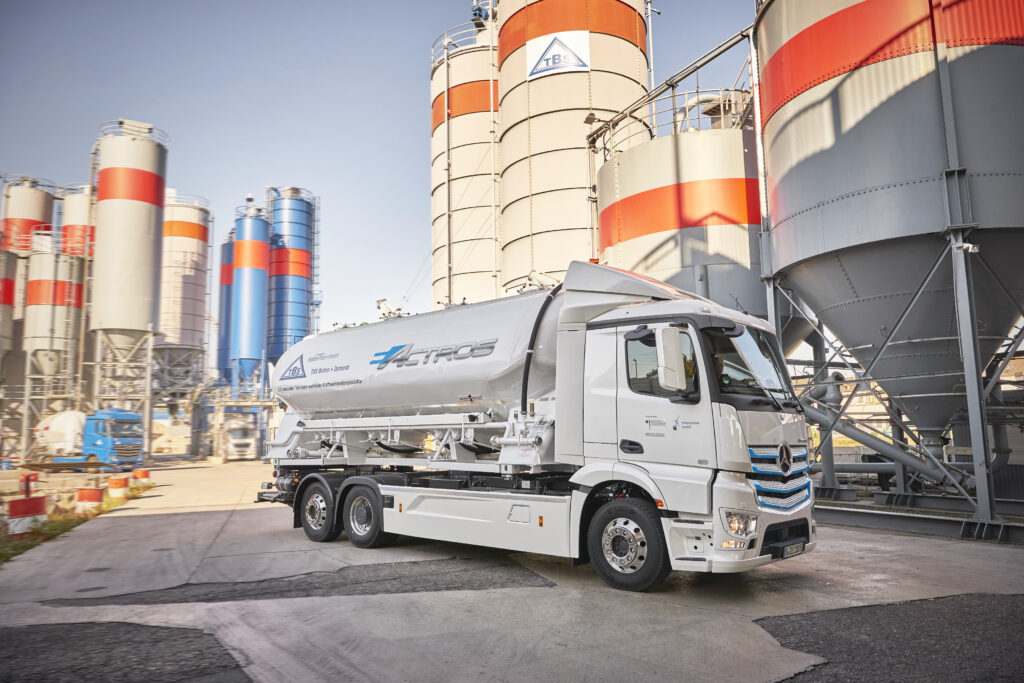Engineless transport refrigeration trial
- PostedPublished 1 December 2018
British supermarket chain Waitrose is testing Carrier Transicold’s engineless refrigeration units as part of an ongoing government-backed emissions reduction initiative.
These zero-emissions refrigeration units are paired with a natural gas-powered prime mover to demonstrate the potential environmental benefits of such a combination.
In many cases, fleet refrigeration units rely on diesel-powered compressors. These, besides burning fuel, produce unwanted emissions and noise.

The systems being tested by Waitrose, however, make use of Carrier Transicold’s ‘Eco-drive’ power module. It features a hydraulic motor, driven by a power take-off from the truck’s engine, which drives a generator at a constant speed. This then provides electrical power for the refrigeration unit’s compressor and control hardware.

As a result, the refrigeration unit – also from Carrier Transicold, in this case – emits nothing and is quieter in operation. “We have specified Carrier Transicold units for many years and they continually impress us with their performance,” said Waitrose vehicle fleet engineering manager Simon Gray.
“We wanted to put the engineless solution to the test and monitor performance across a full 12-month period. The results of the trial will likely guide our future fleet specification – hopefully allowing us to focus on continuing to improve the sustainability of our transport operations.”
Truckin’ on gas
AS EMISSIONS regulations become increasingly restrictive, and environmental concerns continue to grow, many manufacturers are placing more focus on hydrogen fuel cells.
It’s not just automotive manufacturers such as Toyota and Hyundai that are making good use of hydrogen power, as many manufacturers are beginning to make headway with fuel cell-powered commercial and light commercial vehicles. Fuel cell specialist Ballard Power Systems, for example, has been providing fuel cells for truck, van and bus trials in the US market.
Among those employing fuel cell-powered vehicles is the Sunline Transit Agency; it currently operates 10 hydrogen buses and more are on order. Besides offering more range than the pure electric alternatives, these hydrogen-fuelled buses take minutes to refuel – minimising downtime and allowing numerous buses to use one refuelling station.
The appeal of fuel cell technology is easy to understand; you simply supply hydrogen gas and fresh air to the cell and the reaction that takes place within creates electricity and water. Consequently, there are no harmful emissions. Issues such as cost and the lack of infrastructure are also slowly being tackled, making hydrogen a more practical source of power.

Ballard, which is headquartered in Canada and specialises in fuel cells for heavy-duty applications, is also collaborating with UPS in zero-emissions trials; it will test Ballard fuel cell-equipped trucks as part of a scheme partially funded by the California Air Resources Board (CARB) that is running a ‘Zero and Near Zero Emissions Freight Facilities’ (ZANZEFF) grant program.
“Heavy-duty vehicles have a disproportionate impact in terms of air pollution, with buses and trucks accounting for less than 10% of vehicles on the road but about one-quarter of all carbon dioxide emissions plus a significant amount of pollutants in California,” said Rob Campbell, Ballard’s chief commercial officer.
“Hydrogen and fuel cells deliver an attractive value proposition,” said Campbell, “including zero emissions, extended vehicle range, long duty cycles, rapid refuelling and zero compromise on payload.”
The all-electric alternative is not being overlooked, with several established mainstream manufacturers deploying and further developing their own zero-emissions commercial vehicles. Mercedes-Benz recently delivered its first 10 all-electric eActros trucks, which have a range of 200 km and a payload of 18-25 tonnes.

It is not only the vehicle manufacturers themselves that are responding to the ever-changing demands of the industry and environmental regulations. In October, Japanese engine and commercial vehicle manufacturer Isuzu announced a collaboration with US-based industrial equipment manufacturer Cummins; together, the companies will explore the future of diesel and electric power in what is a rapidly changing market.
Isuzu described the industry as going through a period of “once-in-a-century innovation,” leading to many markets to ultimately prioritising electric power – where appropriate – over less environmentally friendly alternatives.
Cummins, in a move that will bolster this new collaboration, acquired electric and hybrid powertrain supplier Efficient Drivetrains earlier this year. Cummins also recently worked with Hyundai Construction Equipment to develop a small electric excavator.
- CategoriesIn SightGlass
- Tagshydrogen trucks, SightGlass News Issue 15, transport refrigeration

